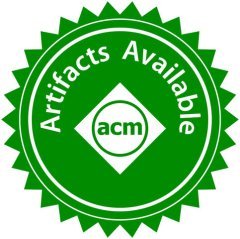Posit: Simultaneously Tagging Natural and Programming LanguagesTechnical
Software developers use a mix of source code and natural language text to communicate with each other: and Developer mailing lists abound with this mixed text. Tagging this mixed text is essential for making progress on two seminal software engineering problems - traceability, and reuse via precise extraction of code snippets from mixed text. In this paper, we borrow code-switching techniques from Natural Language Processing and adapt them to apply to mixed text to solve two problems: language identification and token tagging. Our technique, Posit, simultaneously provides abstract syntax tree tags for source code tokens, part-of-speech tags for natural language words, and predicts the source language of a token on mixed text. To realize Posit, we trained a biLSTM network with a Conditional Random Field output layer using abstract syntax tree tags from the CLANG compiler and part-of-speech tags from the Standard Stanford part-of-speech tagger. Posit improves the state-of-the-art on language identification by 10.6% and PoS/AST tagging by 23.7% in accuracy.
| POSIT Slides (slides_icse20_posit.pdf) | 3.25MiB |
Tue 7 JulDisplayed time zone: (UTC) Coordinated Universal Time change
15:00 - 16:00 | A3-Code SummarizationTechnical Papers / New Ideas and Emerging Results / Paper Presentations at Silla Chair(s): Shaohua Wang New Jersey Institute of Technology, USA | ||
15:00 12mTalk | Posit: Simultaneously Tagging Natural and Programming LanguagesTechnical Technical Papers Profir-Petru Pârțachi University College London, Santanu Dash University College London, UK, Christoph Treude The University of Adelaide, Earl T. Barr University College London, UK Pre-print Media Attached File Attached | ||
15:12 12mTalk | CPC: Automatically Classifying and Propagating Natural Language Comments via Program AnalysisTechnical Technical Papers Juan Zhai Rutgers University, Xiangzhe Xu Nanjing University, Yu Shi Purdue University, Guanhong Tao Purdue University, Minxue Pan Nanjing University, Shiqing Ma Rutgers University, Lei Xu National Key Laboratory for Novel Software Technology, Nanjing University, Weifeng Zhang Nanjing University of Posts and Telecommunications, Lin Tan Purdue University, Xiangyu Zhang Purdue University | ||
15:24 12mTalk | Suggesting Natural Method Names to Check Name ConsistenciesTechnical Technical Papers Son Nguyen The University of Texas at Dallas, Hung Phan , Trinh Le University of Engineering and Technology, Tien N. Nguyen University of Texas at Dallas Pre-print | ||
15:36 6mTalk | Where should I comment my code? A dataset and model for predicting locations that need commentsNIER New Ideas and Emerging Results Annie Louis University of Edinburgh, Santanu Dash University College London, UK, Earl T. Barr University College London, UK, Michael D. Ernst University of Washington, USA, Charles Sutton Google Research | ||
15:42 12mTalk | Retrieval-based Neural Source Code SummarizationTechnical Technical Papers Jian Zhang Beihang University, Xu Wang Beihang University, Hongyu Zhang University of Newcastle, Australia, Hailong Sun Beihang University, Xudong Liu Beihang University Pre-print | ||
15:54 6mTalk | The Dual Channel HypothesisNIER New Ideas and Emerging Results Casey Casalnuovo University of California at Davis, USA, Earl T. Barr University College London, UK, Santanu Dash University College London, UK, Prem Devanbu University of California, Emily Morgan University of California, Davis | ||